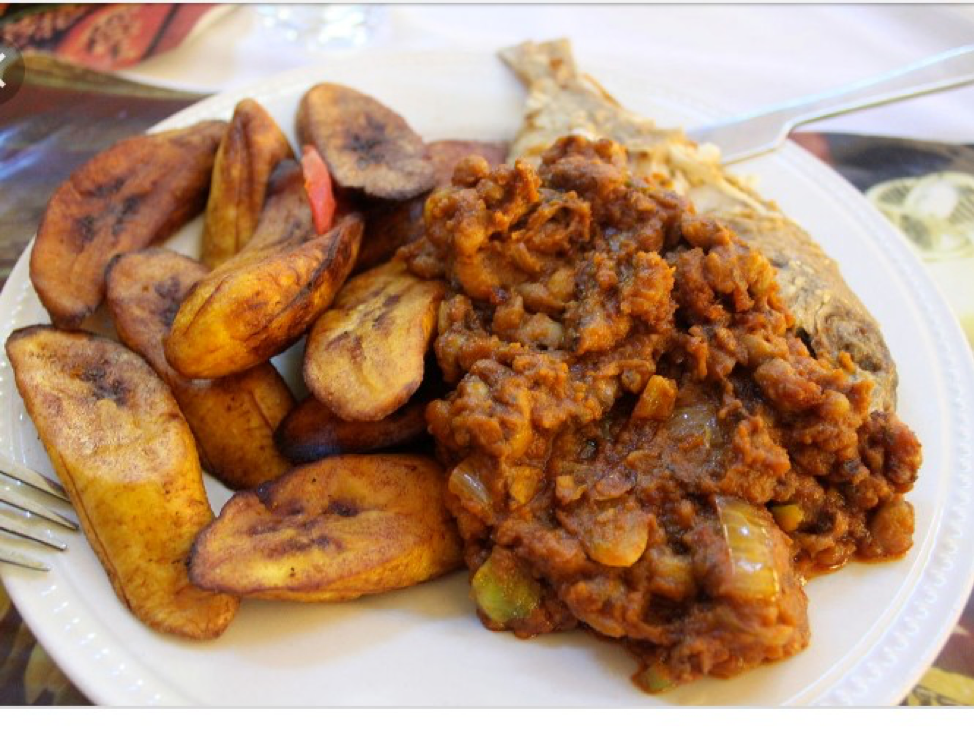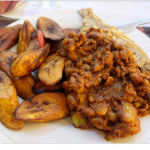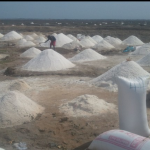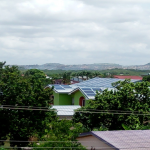FOOD CULTURE IN GHANA

There are certain food that you are can’t afford to miss when you come to Ghana. Most of these foods though local have a touch of the western when it comes to ingredients used. Even if you can’t prepare it yourself, I can gladly say that you can get some to buy at various food joints and restaurants. The most popular places are the local food joints and chop bars. Depending on how much you are ready to spend, you can choose to go to the restaurants or local joints. Frankly speaking I would say that most of the local joints have mouthwatering delicacies which you would love to taste.
There’s one very meal which usually come up as a topic of debate usually on social media. A lot of people compare it to other nations. At the end of this debate it happens that Ghana always emerges the winner. Am talking about Jollof Rice. Made from rice and stew, Jollof rice is a mixture of the two. It looks orange in colour and could be served with either fish or meat with an accompaniment of Cole slaw or salad. It’s a very popular kind of meal and served at a lost every occasion in Ghana. I would recommend Ghana Jollof for you any time and any day.
The second food am going to talk about is waakye. Waakye is a combination of plain rice and beans cooked together. Its brown in colour. Usually, to get the colour of the food to be darker, one can use the waakye leaves. Waakye used to be a northern food but now it’s seen everywhere, served with stew and pepper sauce (shito), waakye can be made more appetizing by the addition of fried plantain, gari, marcaroni, fish or meat and the popular wele (roasted skin of a goat or sheep or cow). One popular waakye joint in Accra is “Aunti Muni Waakye”.
Back in the days, people didn’t really make tilapia significant but now tilapia has become one of the most expensive protein in Ghana. Banku and tilapia has become everyones favorite. Banku is made from cassava and corn dough. It is then moulded into round shapes or oval. Banku and tilapia is eaten with pepper sauce or shito. The tilapia is grilled with spices and so don’t get about getting nauseated.
Ask me my favorite food and I would gladly mention Red Red. Red Red is a combination of fried ripe plantain with bean stew. For the local joints, the beans is boiled separately and so when bought, the red oil is added. Most often it patronized by men. Locally Red Red is known as “Gobe”. It’s very appropriate for vegetarians but for the meat lovers you can get yourself a piece of chicken or fish when you want.
Fufu and light soup is also on popular Ghanaian food. Food is made from pounded boiled cassava with plantain. The Northerners normally make do with yam. Light soup known locally as “nkrakra” is basically vegetable soup with meat, fish, and others like snail and “wele”. You can find this delicacy in almost every chop bar you go to in Ghana.
Made from millet flour, Tuo Zafi used to be popular in the Northern region. It looks like Banku but it softer. Tuo zafi is served ayoyo leave soup with some “internal organs of goat or sheep”. It’s very nutritious. You can get a touch of dawadawa to give it that native taste.
Kenkey and fried fish is another meal you can find in Ghana. Since maize is one of the staple foods in Ghana, most of the foods are made from maize. Kenkey is basically a Ga originated food. Very succulent when hot. Its available at any time of the day. It’s taken with black pepper sauce and fish. You can add a touch of sea foods like; octopus, shrimps and variety of fish.
Looking for something spicy and super cool to try? Kelewele…is available. Kelewele is made from soft ripe plantain which has been soaked in spicy sauce. The spiced up plantain is then fried. It usually served with roasted groundnut or fried gizzard. Kelewele can be found on various places along the streets of Accra usually at night though some sellers start operating as early as four in the evening usually getting to the close of most workers.
Most of these meals are patronized by lots of people. When one gets recognized as good cook and hence more customers, he or she gets more market. A lot of the foods stated above cost nothing less than three Ghana Cedis. Some people in order to brand their business have added certain packages to their foods and hence an extra cost. One thing about foods bought at places usually along the street is that, everyone is able to afford it. When next you come to Ghana, don’t forget to try any of these delicious, if I should say, sumptuous meals.











